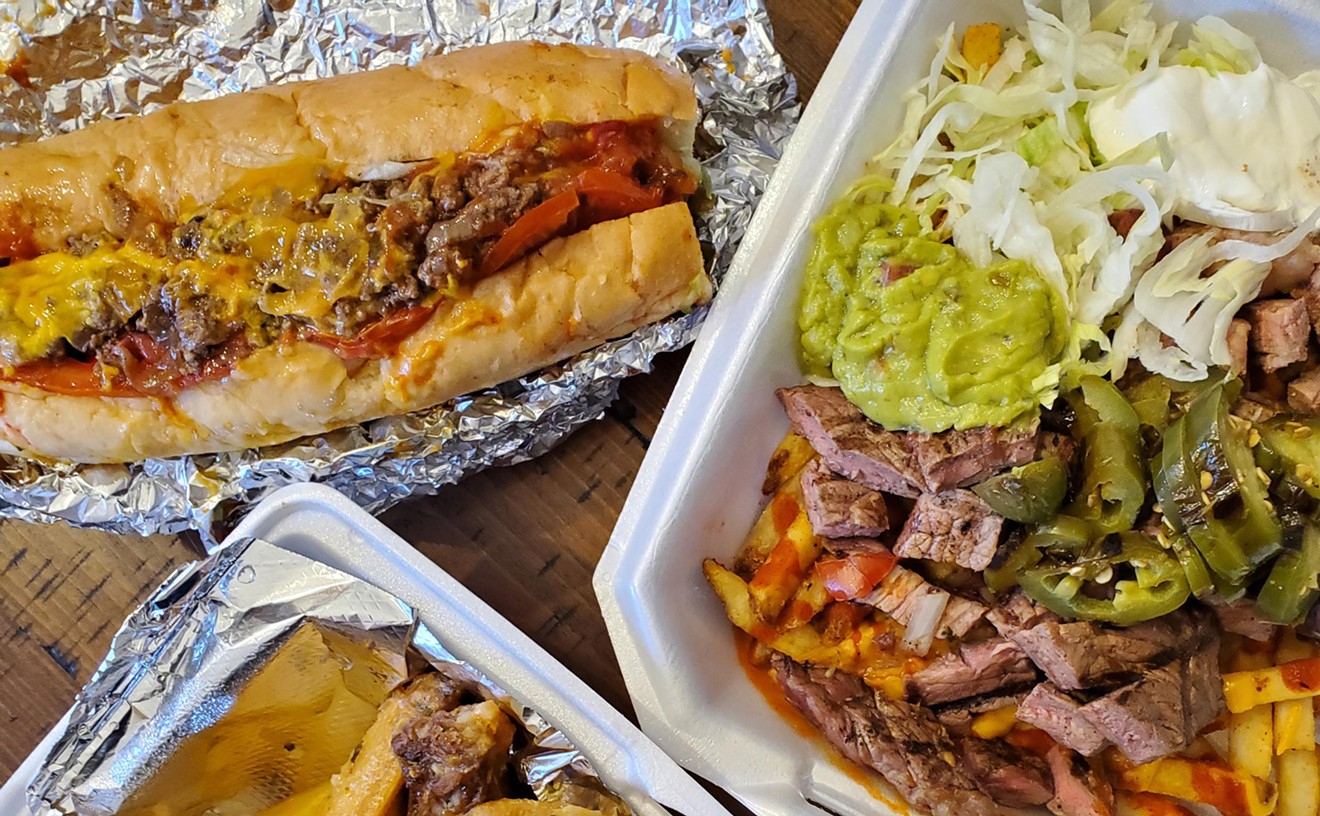"Hi, this is Kyle Wagner from Westword newspaper. I have visited your restaurant and would like to ask a few questions for the review."
"Newspaper? We don't have advertisement."
"No, I'm not selling advertising. I'm a reviewer."
"A review? When are you coming?"
"I've already been there. I do this anonymously; you're not supposed to know I'm there."
"You were here? Why didn't you say something?"
And so it goes until (a) the owner ignores my questions and proceeds to tell me everything there is to know about the restaurant, including a garbled explanation of every dish on the 200-item menu; (b) I give up and write a review with no background information; or (c) we keep trying until we find some common ground and the conversation starts cooking.
Luckily, my chat with Kim Pannotayan, co-owner with her husband, Paul, of Pad Thai, took the last route. Because I certainly wanted to know more about the restaurant, a fledgling eatery with the lowest prices (nothing costs more than $6) and smallest (albeit adequate) portions possible of uncomplicated, commendable Thai food.
The restaurant's setting is equally simple. Situated since March of this year in a corner of the Mission Trace Shopping Center in Lakewood, Pad Thai sports the usual Asian knickknacks, including a nifty set of metal cups and clay dishes from the Pannotayans' homeland--she moved to the U.S. in 1981, he in 1983. The most unusual items they brought over from Bangkok are the two photographs that stare down from the wall next to the door. "That is my queen and my king," Kim says proudly, pointing to Thailand's King Bhumibol Adulyadej and his wife, Queen Sirikit. Why Kim decided to leave her beloved royals behind is still a mystery; we couldn't seem to connect on that question. That she is happy in Denver is obvious, however. "I am here forever," she says.
But will Pad Thai stick around as long as it deserves to? Our meals there were good but simple, the kind that are wasted on ignorant diners who expect to find Americanized imports on the menu of foreign-cuisine restaurants. (Hey, it's an Italian place, they must serve spaghetti.) Unfortunately, those expectations often are matched by immigrant restaurateurs who are afraid to take a gamble and serve the foods they grew up on, instead pandering to the lowest common denominator with stuff they know sells.
That's not the Pannotayans' style. As their restaurant's name suggests, they do offer the most recognizable of Thai foods. But there are other, often better things to try than the familiar rice-noodle/peanut concoction. Although chicken satay still lags behind pad thai in popularity, it's becoming better known--and Pad Thai's version ($4.95) should help that process along. The peanut sauce was exemplary, improving on a recipe that originated in the Indonesian islands and Malaysia (a large percentage of Thailand's inhabitants come from this area, and the two countries play a large role in Thai cooking). The thick puree of peanuts--thinned with coconut milk, spiced with turmeric and coriander and perked up with garlic and Thai chiles--clung to pounded-until-tender chicken strips and green peppers and onions. And the sweet-and-sour Thai style ($4.95) put sticky-sweet Chinese variations (many Thai come from China, too) to shame. The pineapple-studded stir-fry combined tofu with diced cucumbers, tomatoes, onions and green bell peppers, which were then covered with a thin, lightly vinegared sauce rather than something that resembles the coating of a candy apple.
It's that light touch that makes Pad Thai so appealing. Even the restaurant's tom kha gai ($4.95 for two people) was a tidy interpretation of the usually complex soup. This one was quite a bit sweeter than the standard version and less clogged with ingredients--a factor some people might not appreciate. For fans of the spicy coconut-milk base, though, it was wonderful not to have to fight through shards of inedible lemongrass. The other soup we tried, the seaweed ($4 for two), was less interesting; the combination of egg whites, seaweed, chicken and mushrooms didn't add up to much.
Much more intriguing was the stuffed squid ($4.75). A mix of pork, shrimp, bean noodles (made from soybean curds) and hot chiles had been ground almost to a paste, then crammed into six little squid bodies that were washed with a thin tempura batter and deep-fried. The dipping sauce, the Pannotayans' own secret recipe, was spicy, sweet and good enough to eat alone, which we did. The tod mun pla also came with a tasty sauce; the cakes of ground fish got their kick from red curry spices whose fire could be cooled with the nam pla, a fermented fish juice that's Thailand's answer to Vietnam's nuoc mam.
Although Thailand is flanked by water, Pad Thai serves almost no fish, save the cakes and one pan-fried option--a boring (but cheap!) catfish on one visit. Although shrimp is offered as a variation with most entrees, it costs an additional $1, so we stuck with beef or chicken when there was a choice. The pad thai ($4.85), however, tucked both chicken and shrimp, as well as egg, bean sprouts and chopped peanuts, between the rice noodles. When the waitress (who turned out to be Kim; her husband does the cooking) had asked our heat preference, we'd requested the pad thai be spiced "medium," but it came out more of a medium-hot. Although the difference is only a matter of degrees, it can be a killer for taste buds that aren't attuned to Thai temperatures.
Ours were, and we turned up the heat by ordering three of our entrees "hot." Other than the anticipated sense-scalding, however, it was hard to learn much more about the torrid trio. On the menu, each was merely listed by its foreign name, a series of words that described the contents and the cooking method. For example, pad pring khing ($4.85), is a stir-fry (pad) with green beans (pring) and ginger (khing). Most of Pad Thai's dishes are cooked pad, so that part was easy to figure out, but it was almost impossible to determine what kind of sauce went with the ingredients--and sauce is the major difference between them. I would never expect to visit a French restaurant and find the sauces described only as "rich" or "buttery," but that's comparable to what I often encounter in Asian places. And asking Kim didn't help much; she invariably replied, "It's spicy" or "It's not spicy."
So we took a gamble--and won big. The pad pring khing came with a potent red-chile-enhanced sauce; the Thai curry ($5.25) featured a runny coconut-milk base with bamboo shoots, zucchini and basil (which, along with coriander and mint, is the herbal mainstay of Thai cooking); and the pad phet had an abundance of bird's-eye chiles, the overheated ones that most people associate with Thai cuisine.
Some culinary historians speculate that these chiles got their name because they're immensely popular with mynah birds, which are known to become so happy after eating them that they talk incessantly.
At Pad Thai, they're talking my language.










